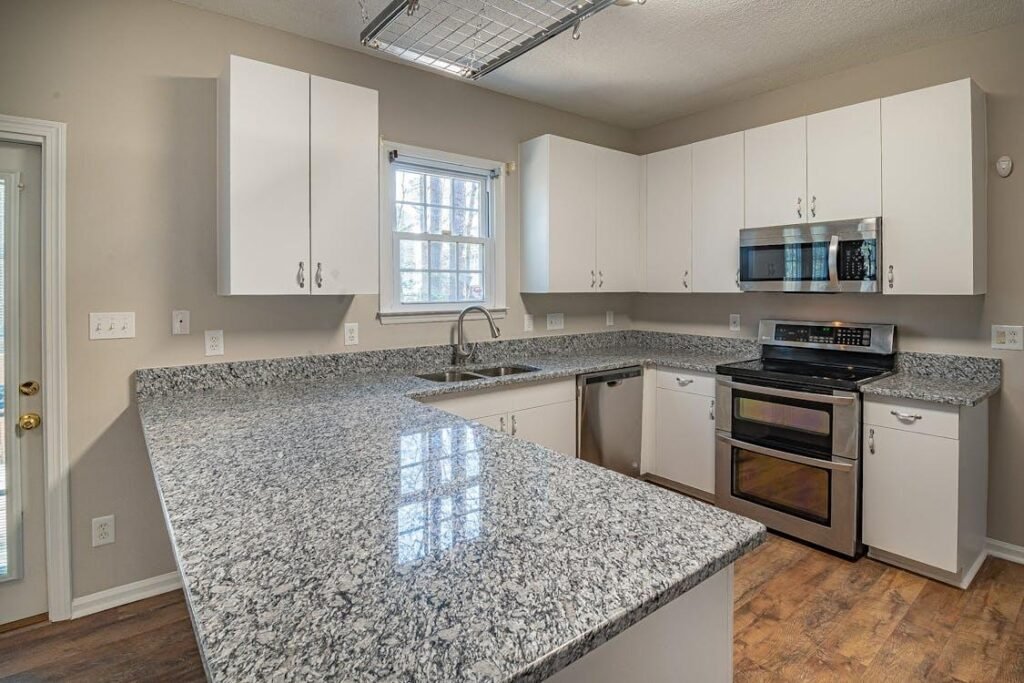Are you dreaming of giving your home a fresh look while also helping the planet? Look no further! In this comprehensive guide, we’ll explore how to renovate your home in an eco-friendly way. From planning your project to selecting sustainable materials, we’ve got you covered.
1. Planning Your Eco-Friendly Renovation
Before diving into your renovation project, take some time to plan. Consider what areas of your home need updating and how you can make eco-conscious choices along the way. Draft a plan to ensure your renovations align with sustainability goals.
Think about the overall goals of your renovation. Are you aiming to reduce energy consumption, minimize waste, or improve indoor air quality? By identifying your priorities, you can tailor your renovation plan to meet your specific sustainability objectives.
2. Choosing Sustainable Materials
Choose materials that have minimal environmental impact. Seek out options like reclaimed wood, bamboo, and recycled glass. These materials not only add character to your home but also contribute to reducing waste.
Research the environmental impact of different materials before making your selection. Look for certifications such as Forest Stewardship Council (FSC) certification for wood products, which ensures that the wood comes from responsibly managed forests.
3. Energy-Efficient Windows and Insulation
Upgrade your windows to energy-efficient models to reduce heat loss and gain. Additionally, invest in proper insulation to keep your home comfortable year-round while minimizing energy consumption.
Windows and insulation play a significant role in regulating temperature and reducing energy costs. Choose windows with double or triple-pane glass and low-emissivity coatings to enhance energy efficiency. Similarly, opt for insulation materials with high R-values to improve thermal performance.
4. Energy-Saving Appliances
When it comes to appliances, prioritize energy efficiency. Look for appliances with the Energy Star label, indicating they meet high energy efficiency standards. These appliances not only save energy but also lower your utility bills.
Replace old, inefficient appliances with newer, energy-efficient models to reduce your home’s energy consumption. Consider factors such as energy efficiency ratings, water usage, and features like programmable settings to maximize savings.
5. Water Conservation Features
Install water-saving fixtures such as low-flow faucets and showerheads to reduce water usage. Consider implementing a greywater system to recycle water from sinks and showers for outdoor use, promoting water conservation.
Water conservation is essential for preserving this valuable resource and reducing utility costs. Seek out fixtures bearing the WaterSense label, verifying they meet the EPA’s water efficiency and performance standards.
6. Harnessing Solar Power
Utilize solar energy by installing solar panels on your roof. Solar energy is renewable and sustainable, offering a clean alternative to traditional electricity sources.
Solar panels convert sunlight into electricity, providing a renewable source of energy for your home. Consider factors such as your home’s orientation, available roof space, and local climate conditions when designing your solar energy system.
7. Eco-Friendly Paint and Finishes
Choose paints and finishes that are low in volatile organic compounds (VOCs) to improve indoor air quality. Opt for eco-friendly options that are free from harmful chemicals, promoting a healthier living environment.
Look for paints and finishes labeled as low-VOC or zero-VOC to minimize off-gassing and reduce indoor air pollution. Consider natural alternatives such as clay-based paints or milk paint for a chemical-free and environmentally friendly option.
8. Sustainable Landscaping Practices
Extend your eco-friendly efforts to your outdoor space by adopting sustainable landscaping practices. Plant native species, use mulch to conserve water, and consider creating a composting system for organic waste.
Sustainable landscaping practices help conserve water, promote biodiversity, and reduce maintenance requirements. Choose drought-tolerant plants that are native to your region to minimize water usage and support local ecosystems.
9. Green Countertop Solutions
When it comes to countertops, there are plenty of eco-friendly options to choose from:
- Reclaimed Wood: Salvaged wood countertops add warmth and character to your kitchen while reducing the demand for new materials.
- Recycled Glass: Transform discarded glass into stunning countertops that add a touch of elegance to your space.
- Bamboo: Sustainable and renewable, bamboo countertops are durable and environmentally friendly.
- Concrete: Choose concrete countertops made with recycled materials for a sleek and modern look.
- Granite: While granite countertops are durable and long-lasting, the extraction process and transportation can have environmental impacts. Additionally, the cost of granite countertops may be higher compared to other eco-friendly options.
Conclusion
By following these eco-friendly renovation tips, you can create a home that is not only beautiful but also sustainable. From energy-efficient upgrades to eco-conscious materials, every choice you make contributes to a greener future. So, roll up your sleeves and embark on your journey to a more eco-friendly home today!
Also read: Cabinet Repair: Restore Your Cabinets to Like-New Condition



More Stories
Industrial Revolution 4.0 and the Dawn of Industry 5.0
Why Choose Dubai for Your Business? A Guide to Top Business Setup Consultants and Solutions Providers
Durable Custom wax Paper: Keeps Food Fresh